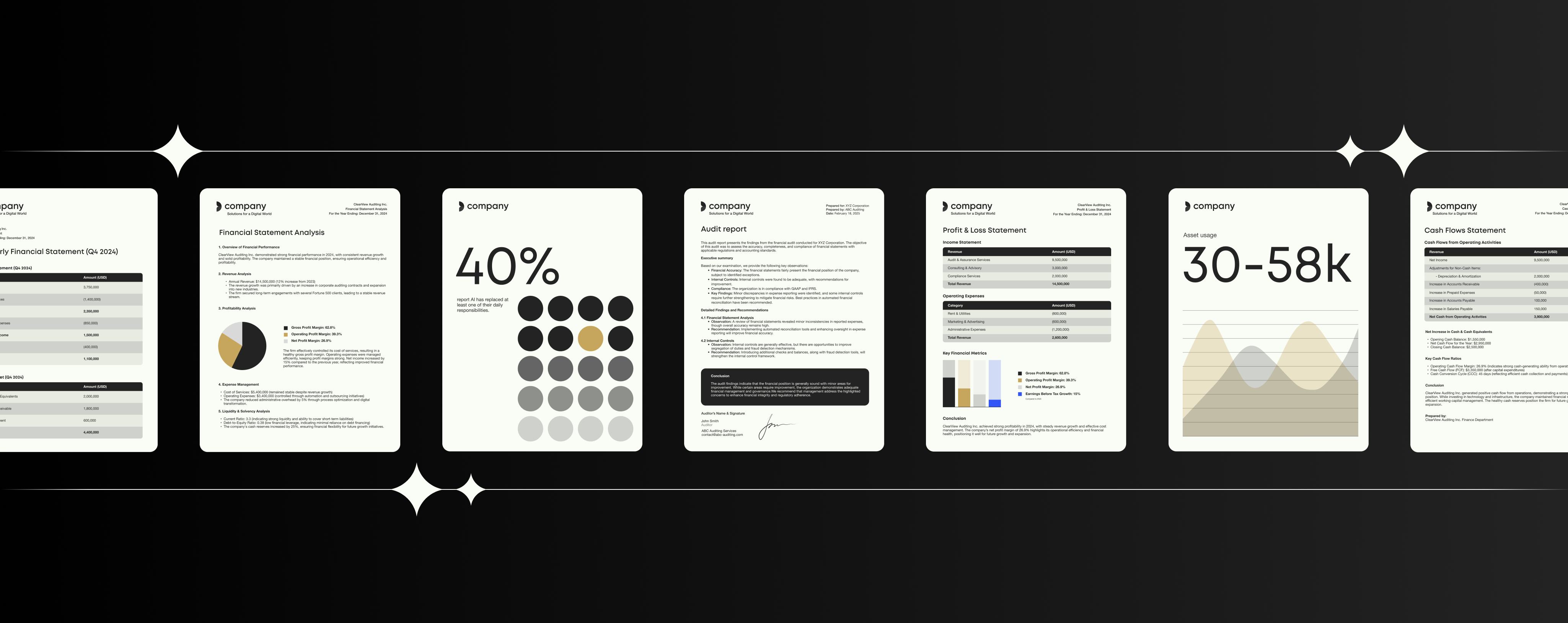How legal automation is changing everyday work for law firms

Legal work has always been document-heavy, detail-oriented, and time-sensitive.
Almost by definition, legal work is a mixture of high-level advisory work and routine tasks.
On one hand, lawyers are asked to apply their expertise and judgment to complex legal scenarios. On the other hand, they also need to execute a significant amount of process-driven work: drafting documents, reviewing contracts, ensuring compliance, and handling the endless administrative tasks that are essential to maintaining a competitive legal practice.
No one goes to law school to spend hours copying and pasting text or manually tracking contract versions. Yet, many legal professionals find themselves bogged down by repetitive tasks that could be handled more efficiently with technology. This is where legal automation comes in.
Legal automation simplifies time-consuming tasks, giving lawyers more time to focus on higher-value work. For law firms, this could mean automating due diligence document reviews, so associates don’t have to manually sort through thousands of emails. In-house legal teams may use automation to generate and manage contracts more efficiently or leverage AI to speed up contract review and compliance checks.
With advances in artificial intelligence (AI), robotic process automation (RPA), and no-code platforms, legal automation is not just an emerging trend—it’s a must-have tool for law firms that want to stay competitive.
Let’s dive into how legal automation works, its benefits, and what’s coming next.
What is legal workflow automation?
Legal automation refers to the use of technology to perform tasks traditionally handled by legal professionals. These tools streamline processes like document creation, contract management, compliance tracking, and case management—allowing legal teams to focus on complex decision-making instead of routine administrative work.
Types of legal automation
- AI legal assistants: AI-powered tools automate research, document review, and basic inquiries, reducing time spent on repetitive tasks.
- Contract review and analysis: AI-driven contract tools speed up review processes, identifying risks and inconsistencies with greater accuracy.
- Automated workflows: No-code automation platforms streamline manual tasks, improving processes like inquiry handling and case triage.
- Risk and compliance management: Automated tools help track regulatory changes and flag potential compliance risks.
- Knowledge management: AI-powered research tools compile and deliver relevant legal knowledge to teams efficiently.
- Obligation management: Automated contract renewal reminders and obligation tracking ensure deadlines are met.
By automating these areas, legal professionals can dedicate more time to strategy, client relationships, and higher-value work.
Legal automation: Benefits and use cases
Automation isn’t here to replace lawyers; it’s here to make them more effective.
AI-powered tools significantly reduce human error in legal documents, ensuring consistency and compliance. With AI, legal teams can work more effectively by reviewing contracts, generating documents, and tracking cases in a fraction of the time.
Automation also helps firms stay updated on regulatory changes without manually tracking every new development, ultimately improving compliance. Additionally, by reducing the time spent on repetitive tasks, firms can allocate more billable hours to strategic legal work, leading to cost savings and increased productivity.
Let’s look at specific applications.
Legal document automation
Legal document automation helps firms create, review, and manage documents with minimal manual input. With AI and predefined templates, these systems can quickly generate contracts, NDAs, and other legal forms with accurate, case-specific details.
In fact, legal automation tools can help law firms save up to 40% of their time by automating repetitive tasks. This efficiency allows legal teams to focus on high-impact work instead of manually drafting every document from scratch.
Legal workflow automation
Legal workflow automation streamlines processes like contract approvals, case tracking, and compliance monitoring. Instead of manually tracking progress, automation tools notify relevant team members about pending tasks, reducing bottlenecks and improving overall efficiency.
A LexisNexis report found that 74% of legal professionals say technology makes their team more productive, and 54% report that it helps automate repetitive tasks. That means fewer missed deadlines, smoother operations, and better use of resources.
Contract and e-discovery automation
Reviewing contracts and conducting legal research are some of the most time-consuming aspects of legal work. AI-powered contract review tools scan documents for risks, inconsistencies, and missing clauses. E-discovery tools can analyze thousands of pages of legal documents in minutes, identifying relevant information that would take days to find manually.
One report revealed that 66% of lawyers see generative AI’s biggest potential in research, 59% in briefing documents, and 47% in document analysis. With automation, firms can reduce the risk of oversight and handle cases more efficiently.
How Templafy supports legal document automation
Templafy helps law firms streamline their document workflows by providing a centralized platform for document automation, management, and compliance. With Templafy, legal teams can generate contracts, reports, and other essential documents quickly and accurately, ensuring brand consistency and reducing errors.
The platform is designed to integrate seamlessly with existing legal software, so teams always have access to up-to-date templates and can automate repetitive tasks. Instead of hunting for the right document or manually entering data, legal professionals can pull in the latest templates and auto-fill key details in seconds.
Templafy also acts as a single source of truth for legal documents. Thanks to centralized management and clear user roles, everyone on the team can access the most current, compliant templates, ensuring all legal communications are accurate and aligned with regulations.
With dynamic fields that auto-populate client details and case specifics, document prep is faster and more efficient. Legal teams can generate high-quality, professional documents in minutes—without worrying about formatting, errors, or outdated templates.
By streamlining document creation, Templafy helps law firms work smarter, reduce risks, and focus on what matters most: practicing law.
Ensuring security and compliance in legal automation
One of the biggest concerns companies have when introducing any new technology—especially AI and automation tools—is security. This is especially relevant in the legal field, where documents often contain sensitive and confidential information.
Whether your law firm is a local practice or a global enterprise, here are the top security considerations to review when selecting a new legal automation tool:
- Data security and encryption: Legal automation platforms must use robust encryption methods to protect sensitive client and case data from unauthorized access. End-to-end encryption ensures that confidential information remains secure both in transit and at rest.
- Privacy and compliance regulations: Automation tools should comply with key data protection regulations such as GDPR, CCPA, and industry-specific legal standards. Firms should ensure that their chosen solutions provide built-in compliance features that align with legal and ethical obligations.
- Access control and user permissions: Law firms must implement strict access control measures, ensuring that only authorized personnel can view, edit, or approve automated legal documents. Role-based access and audit trails help maintain accountability and prevent unauthorized changes.
- AI transparency and governance: If AI is used in automation, firms must ensure transparency in how algorithms make decisions. Legal professionals should be able to review and verify AI-generated content to prevent potential errors or biases in automated workflows.
- Secure cloud and on-premises options: Many legal teams use cloud-based automation tools, but it’s essential to choose solutions that offer secure hosting environments. Some firms may prefer on-premises deployment options to maintain complete control over their data.
- Regular audits and compliance checks: Ongoing monitoring and audits of automation platforms help firms ensure continued compliance with evolving regulations. Implementing periodic reviews of automation workflows can identify potential security risks before they become significant threats.
By integrating these security and compliance measures, law firms can confidently adopt legal automation without compromising data integrity or regulatory adherence. Selecting technology partners that prioritize security, like Templafy, ensures that automation enhances efficiency without introducing risk.
The future of legal automation: What to expect
Legal automation is continuing to evolve, expanding into more areas of legal practice. One key trend is AI-driven legal research, which enables lawyers to quickly find relevant case law, statutes, and precedents, significantly reducing the time spent on legal research. AI is making these processes faster, more accurate, and less labor-intensive.
Contracts, specifically smart contracts, are another area with a lot of new investment in automation. Smart contracts use blockchain technology to execute agreements automatically when predefined conditions are met. This reduces the need for intermediaries, ensures contract security, and improves efficiency in contract execution. As blockchain adoption grows, law firms will likely see an increase in its use for secure, automated transactions.
Additionally, the rise of no-code automation tools is allowing legal professionals to streamline workflows without requiring extensive IT expertise. These tools help law firms to build automated workflows that enhance efficiency in areas like document approval, case tracking, and compliance monitoring. With more law firms adopting these user-friendly platforms, legal automation is becoming more accessible than ever.
Goldman Sachs estimated that AI automation could replace 44% of tasks within the legal profession. While this doesn’t necessarily mean fewer jobs, it does signal a shift in how legal professionals will work in the future. Lawyers will spend less time on administrative tasks—and more time on legal strategy, client interactions, and complex problem-solving. The firms that embrace these advancements early will gain a competitive edge in the evolving legal landscape.
Getting started with legal automation
Legal automation is no longer just a theoretical concept, it’s an essential tool that modern law firms must embrace to stay competitive. By implementing automation, legal professionals can redirect their focus from time-consuming administrative work to high-value legal strategy and client service.
For firms looking to future-proof their operations, the best approach is to start small and scale up. Begin by automating the most repetitive, document-heavy tasks, such as contract generation and compliance tracking. As your firm becomes more comfortable with automation, you can expand to more advanced solutions like AI-powered legal research and workflow automation.
The firms that proactively integrate legal automation into their processes will gain a strategic edge in an industry that is increasingly digital. By adopting platforms like Templafy, law firms can increase efficiency, ensure document accuracy, and deliver better results for their clients.
Templafy’s document automation platform integrates with existing systems and uses personalized rules to quickly generate on-brand, professional documents. Instead of wasting time on manual edits, lawyers can generate contracts, NDAs, case reports, and other legal documents in minutes. In short, Templafy helps law firms create accurate, compliant documents faster.
Ready to take the next step? Book a demo with Templafy to learn more about how legal document automation can improve your firm’s workflow.



